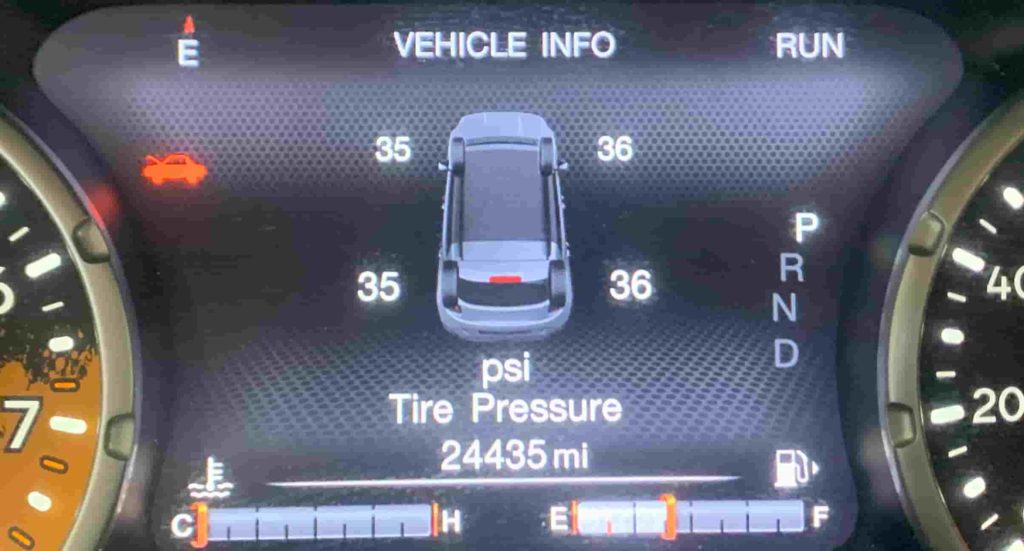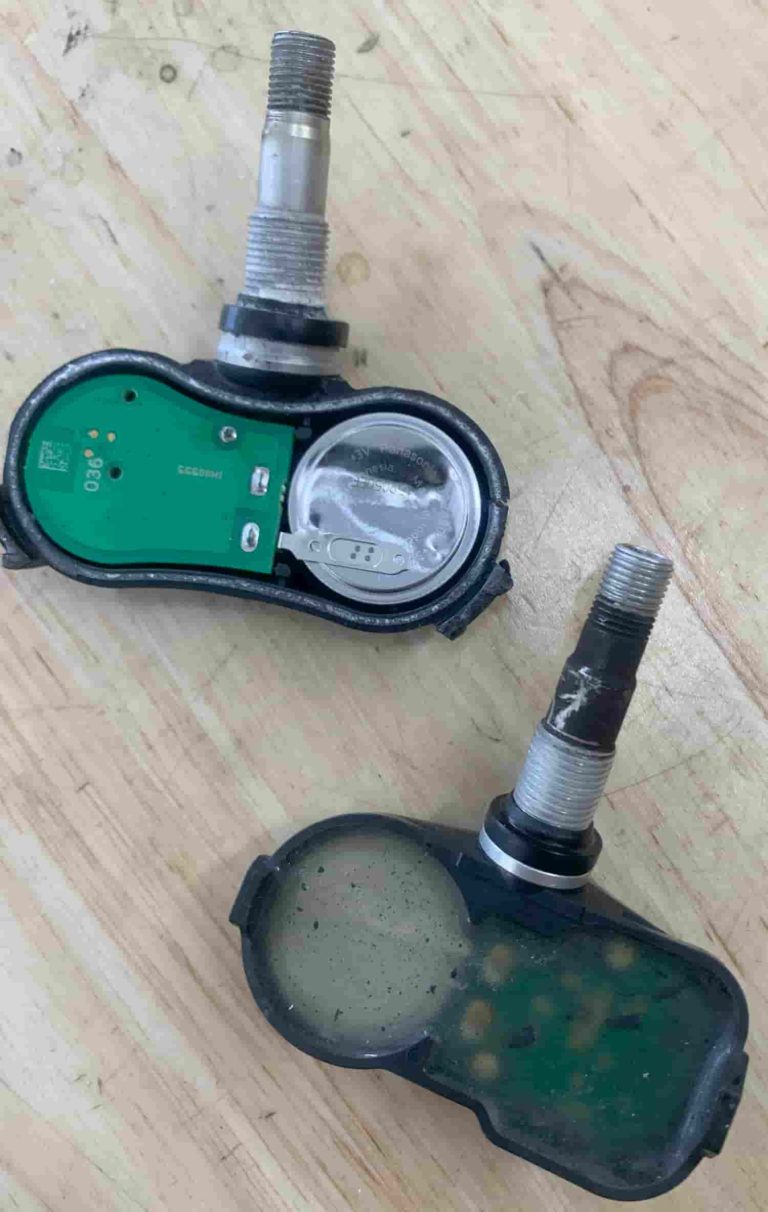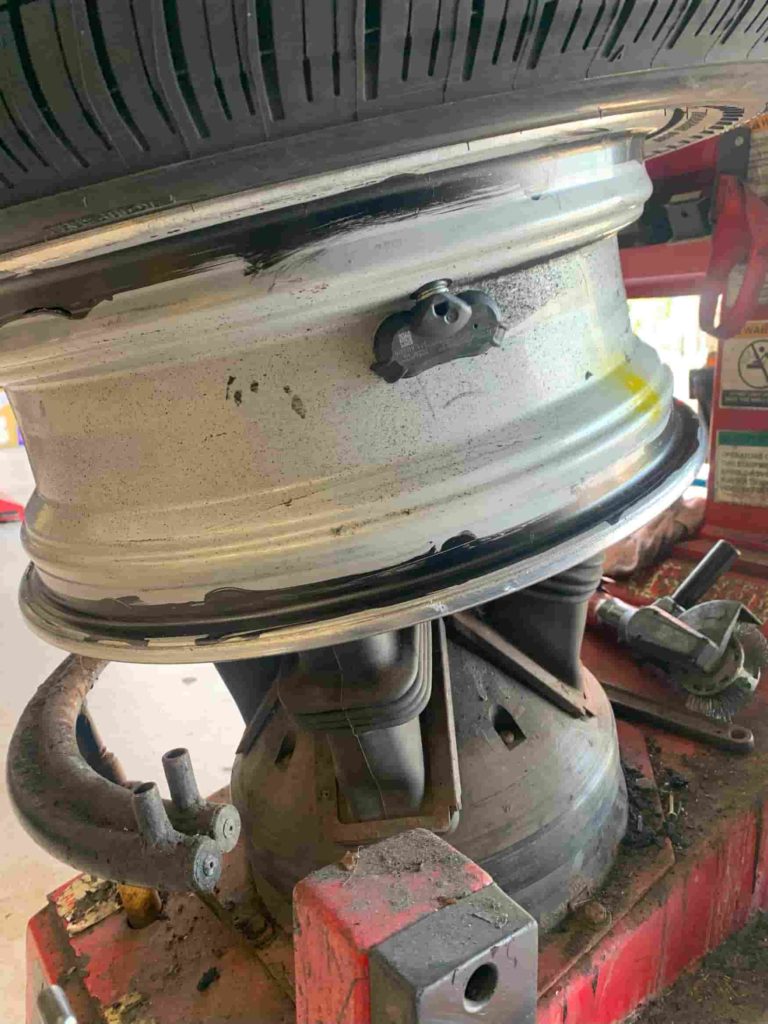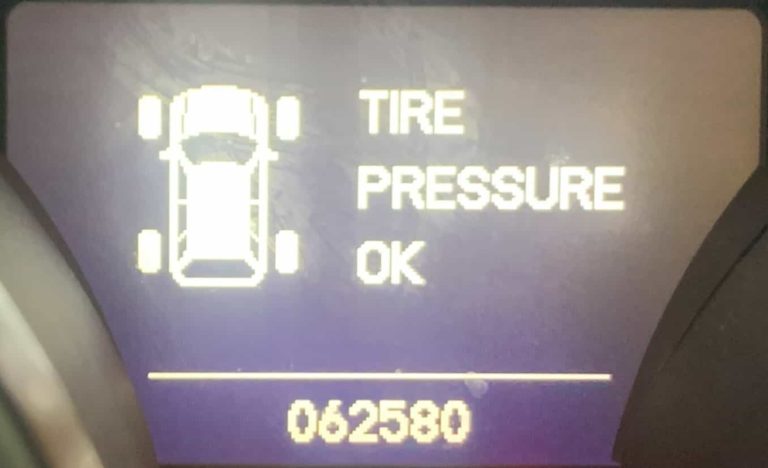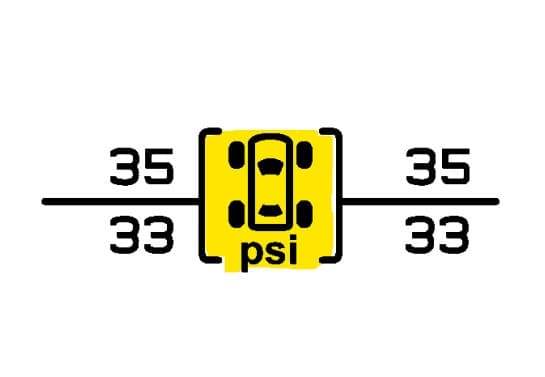Introduction
Tire pressure monitoring systems (TPMS) are devices that monitor the air pressure of a vehicle’s tires and alert the driver when the pressure is low. The TPMS sensors are fitted inside each tire, and they send signals to a receiving unit in the car. The receiving unit then alerts the driver when there is a problem with tire pressure.
Explanation of TPMS Sensors
There are two types of TPMS sensors: direct and indirect. Direct TPMS sensors use physical pressure sensors inside each tire to measure air pressure and temperature and send this information to the car’s onboard computer system for display on a dashboard screen or warning light.
Indirect tire pressure monitoring systems rely on wheel rotation speed measurements taken from ABS (Anti-Lock Braking System) sensors to determine if one or more tires are underinflated. Direct TPMS sensor systems have become more common in recent years because they provide more accurate data about tire pressures, including individual tire pressures instead of just an overall warning that one or more tires is low.
The Importance of TPMS Sensors in Vehicles
Maintaining proper tire inflation is essential for safe driving. Underinflated tires can cause poor handling, decreased fuel efficiency, EV range, and increased wear on tires leading to premature failure.
Additionally, insufficiently inflated tires can lead to blowouts that can cause serious accidents. TPMS sensors play a critical role in ensuring proper tire inflation by constantly monitoring air pressure levels and alerting drivers when there is a problem before it becomes dangerous.
Overview of Legal Regulations on TPMS Sensors
Many countries have legal requirements for vehicles to have functioning TPMS systems installed as standard equipment. These regulations aim to improve road safety by ensuring drivers are aware when their vehicle’s tire pressures drop below recommended levels. Regulations vary between countries; some require all vehicles regardless of age, while others only require them on new vehicles.
In the United States, TPMS regulations have been in place since 2007. The European Union has also mandated TPMS systems on new vehicles since November 2014, with individual EU member states implementing varying levels of enforcement.
Legal Regulations in the United States
National Highway Traffic Safety Administration (NHTSA) Regulations
The National Highway Traffic Safety Administration (NHTSA) mandated TPMS sensors in all vehicles sold in the United States since 2008. This regulation came into effect following a spike in fatalities caused by tire blowouts, which accounted for around 400 deaths annually. The NHTSA requires TPMS sensors to monitor tire pressure and provide drivers with timely alerts if any of the tires are underinflated.
History and Evolution of NHTSA Regulations on TPMS Sensors
Before the final rule was established, tire manufacturers and other stakeholders raised concerns about the proposed TPMS mandate. They argued that the initial plan, which required the system to alert drivers when a tire lost 25 percent of its pressure or more, was impractical because many vehicles have spare tires that do not need monitoring.
In response to these concerns, NHTSA revised its proposal and reduced the required threshold to 20 percent underinflation. The agency also allowed different types of TPMS systems based on indirect or direct measurements.
Indirect measurements rely on wheel speed sensors that detect changes in tire rotation caused by underinflation while direct methods employ pressure sensors installed inside each tire. These revisions were made after considering public comments and technical feedback.
Current Requirements for TPMS Sensors in the US
In accordance with NHTSA’s current regulation, all newly manufactured passenger cars with gross vehicle weight ratings (GVWRs) less than or equal to 10,000 pounds must be equipped with a functioning TPMS system that provides alerts when a tire is underinflated by more than 25 percent of its ideal pressure level or reaches a minimum threshold set by the manufacturer. For heavy-duty vehicles such as buses and trucks, this requirement applies to vehicles with GVWRs (gross vehicle weight rating) of more than 10,000 pounds.
Additionally, the system must notify drivers with a warning light on the dashboard that remains illuminated until the tire pressure is corrected. Tire manufacturers must also ensure that their products are compatible with the TPMS installed in vehicles.
State-Level Regulations
In addition to federal-level regulations, some states have separate TPMS requirements for vehicles operating within their borders. California has its own Air Resources Board (CARB) regulations that mandate TPMS sensors on all new vehicles sold in the state since September 2004.
These requirements mirror those set by NHTSA but emphasize environmentally friendly tires and systems. Other states such as Connecticut, Hawaii, Louisiana, and Rhode Island have adopted similar laws that require TPMS sensors in new vehicles sold within their jurisdiction.
States may also impose penalties on drivers who operate a vehicle with malfunctioning sensors or attempt to disable them. Therefore, it is important for individuals to check both federal and state-level TPMS laws before purchasing or driving a vehicle to avoid noncompliance fines and penalties.
Legal Regulations in Europe
European Union (EU) Regulations
The European Union regulates the use of TPMS sensors in all of its member states. The EU regulation on TPMS requires all new vehicles sold within the EU to have TPMS sensors installed. The regulation was implemented in November 2014, and it applies to all passenger vehicles and light commercial vehicles with a total weight under 3.5 tons.
The EU has set specific requirements for TPMS sensors, including when they should trigger an alert for low tire pressure and how the alerts should be communicated to the driver. The regulation also specifies that TPMS sensors must be able to function at temperatures ranging from -40°C to +85°C, cover ranges of 0-7 bar pressure and store at least one year’s worth of data.
Overview of EU Regulation on TPMS Sensors
The EU regulation on TPMS sensors is designed to enhance road safety and reduce environmental impact by ensuring that drivers maintain their tires at the correct pressure levels. According to research carried out by the European Commission, nearly 40% of European drivers are unaware that their tires are underinflated.
In addition to reducing fuel consumption and greenhouse gas emissions, properly inflated tires can also improve vehicle handling, reduce braking distances and increase tire life. By mandating TPMS sensors across Europe, the EU expects a reduction in accidents caused by poorly inflated tires.
Differences Between EU and US Regulation on TPMS Sensors
While both Europe and the United States regulate the use of TPMS sensors in vehicles, there are some differences between their respective regulations. For instance, whereas US regulations specify a minimum trigger level for low tire pressure warnings (25% below recommended inflation), there is no such requirement under European regulations. Another major difference between the two regulatory frameworks is that US law mandates that TPMS sensors must operate continuously, whereas the EU allows for the possibility of temporary malfunctioning of the sensors due to adverse weather conditions or other factors.
Country-Level Regulations
Each EU country is also free to introduce its own regulatory requirements for TPMS sensors. For instance, Germany’s StVZO regulation requires that TPMS systems must also be able to detect underinflation in dual-wheel tires and twin tires. France’s Règlementation Technique des Véhicules, meanwhile, specifies that TPMS systems must have a manual override function that allows drivers to cancel alerts in certain situations.
Legal Regulations in Asia and Oceania
Japan's TPMS Regulation
Japan has implemented its own set of regulations on TPMS sensors known as the Japan Industrial Standard (JIS) D5301. The regulation mandates that all passenger vehicles, including imported ones, must have TPMS sensors installed as standard equipment. The regulation covers both direct and indirect TPMS technologies and requires that they meet specific performance standards.
The performance standards include accuracy in detecting tire pressure drops of at least 20% below the recommended level, a warning to the driver within 10 seconds of detection, and durability requirements for all sensor components. This strict regulation ensures that all vehicles on Japanese roads are equipped with reliable TPMS sensors to help increase safety for drivers.
Australia's Motor Vehicle Standards Act
Australia has also implemented regulations regarding TPMS sensors through the Motor Vehicle Standards Act. The act requires all new passenger vehicles manufactured on or after July 1st, 2021 to be fitted with either a direct or indirect TPMS system. This regulation aims to reduce accidents caused by underinflated tires on Australian roads.
The act specifies a minimum threshold of pressure drop at which point the warning must be triggered. It also contains provisions for aftermarket systems installed by car owners or mechanics and allows them as long as they comply with certain technical requirements specified in the regulations.
China's TPMS Regulation
China’s regulations concerning TPMS sensors are covered under GB/T19596-2004 standard. According to this standard, all new light-duty vehicles sold in China must be fitted with either a direct or an indirect tire pressure monitoring system. The standard applies to both domestically produced and imported vehicles.
Direct systems shall measure tire pressure using sensors mounted inside each wheel while indirect systems use information from ABS wheel speed and rotational sensors. The standard specifies requirements for accuracy, reliability, durability, and safety of TPMS installed in vehicles.
Will My Car Pass State Inspection With the Tire Pressure Light On?
The answer largely depends on the state you’re in, but yes your car will still pass state inspection with the tire light on. Some states such as New York include the tire pressure light in their inspection process, yet its illumination doesn’t result in an automatic failure. Similarly, in Texas, although the TPMS is evaluated during safety checks, a tire pressure malfunctioning won’t lead to inspection failure. My personal experience as a certified state inspector in New Jersey confirms that passenger vehicles with an active tire pressure light will still pass inspection. However, it’s a different scenario for commercial vehicles as they are subject to strict safety inspections. Given the disparity in regulations across states, it’s advisable to reach out to your local Department of Motor Vehicles or relevant state agencies for the most current and precise information.
Conclusion
It is clear that regulations requiring TPMS sensors are becoming increasingly common around the world. With the rise of traffic accidents caused by underinflated tires, governments are taking proactive measures to increase driver safety on the roads.
Although each country has its own specific regulations for TPMS systems, they all share a common goal of ensuring that vehicles on their roads have reliable tire pressure monitoring systems installed. While some drivers may find these regulations to be an added expense or inconvenience, it is important to remember that they serve a critical role in preventing accidents and protecting lives.
As technology continues to evolve, it is likely we will see more countries implementing similar regulations in the future. Overall, this trend towards greater road safety should be welcomed as good news for drivers around the world.
FAQ
Q: Is it illegal to not have TPMS sensors?
A: It largely depends on the country and even specific state you’re in. Many countries have legal requirements for vehicles to have functioning TPMS systems. These requirements are mostly for vehicle manufacturers and not drivers. In most states you will not be fined or ticketed for not having TPMS.
Q: Can I drive my car without TPMS?
A: Technically, you can still drive your car without a TPMS. However, the system plays a crucial role in ensuring your safety by monitoring tire pressure levels and alerting you when there’s a problem.
Q: Can you ignore TPMS?
A: We advise you not to ignore your TPMS. The system is designed to warn you of potentially dangerous situations. Ignoring your TPMS warnings could put you and other drivers on the road at risk.
Q: What happens if you remove your tire pressure sensors?
A: If you remove your tire pressure sensors, your TPMS will no longer be able to monitor your tire pressure levels and alert you when there’s a problem. If you remove the sensors it will cause a TPMS malfunction causing your tire pressure warning light to flash and then stay on.
Q: Can TPMS be bypassed?
A: While it might be technically possible to bypass or disable your TPMS by making software and hardware alterations, doing so is not recommended for safety reasons. In some places it’s illegal to intentionally disable a TPMS, and doing so could result in penalties.
